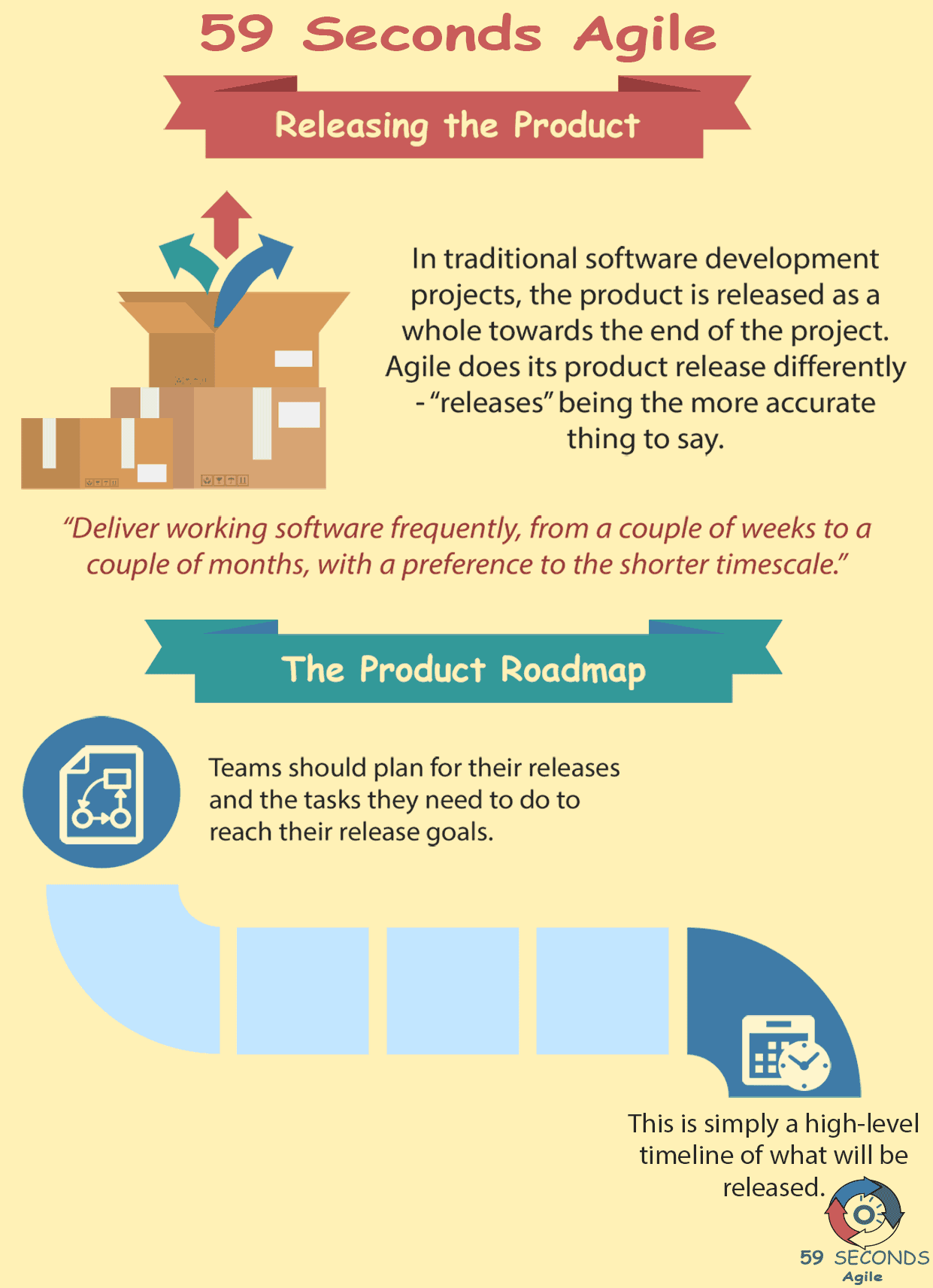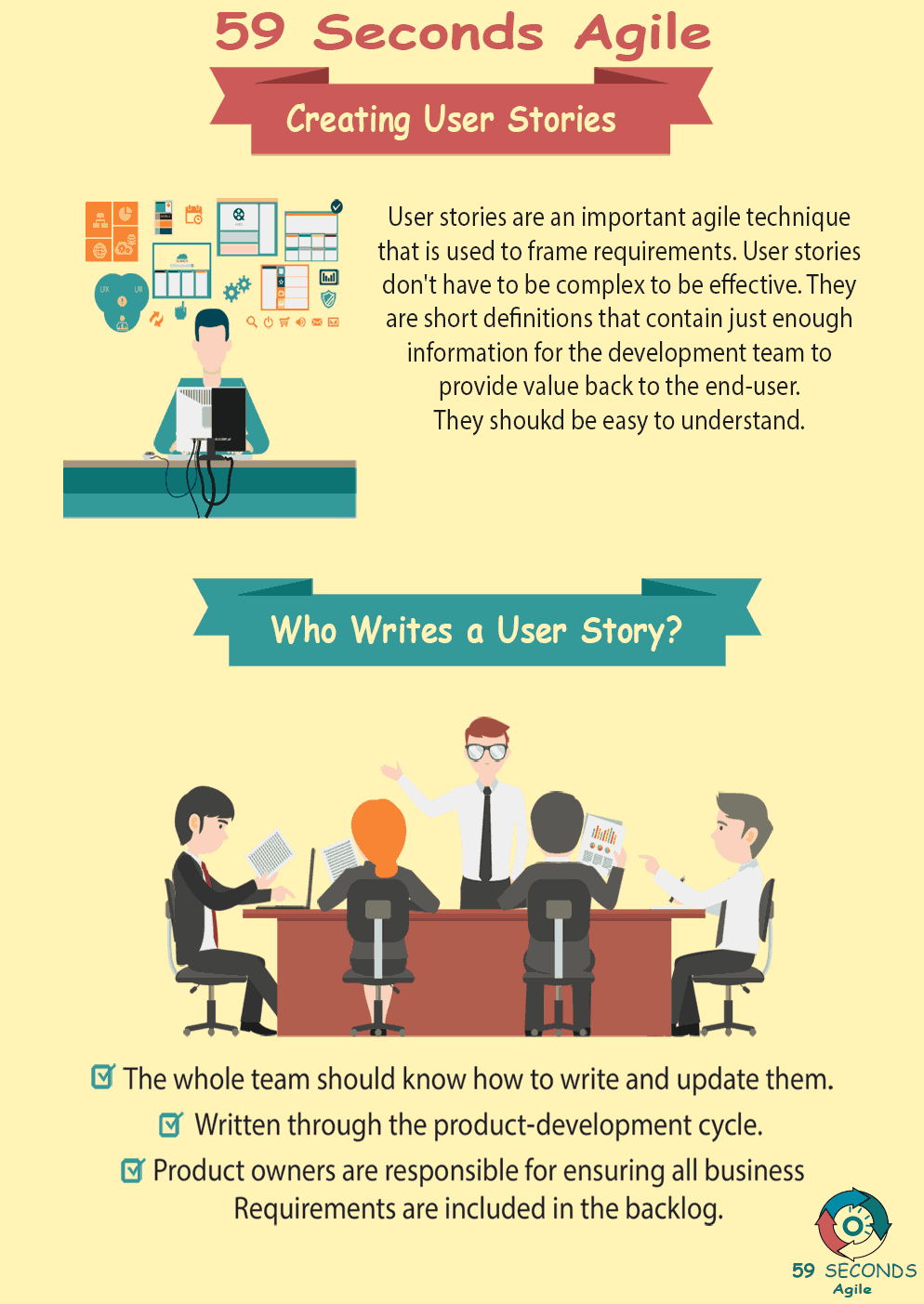How is a New Product Release conducted within an Agile project and is launching a new product any different to a traditional project? We shall explore an Agile projects products launch and what is Agile release planning and see how it impacts the Scrum Developer role.
Estimating Scrum Tasks
A 59 Seconds Agile Video Animation
Releasing New Product and New Technology Releases – Part 2
A 59 Seconds Agile Article
Releasing New Product: The Product Release
The culmination of a sprint, the product release is when software goes to stakeholders. Every bit of work that every role did gets summed up into this one point. Analysts have written up their specification sheets. Developers have written their code. Quality assurance technicians have made sure that everything works as it is supposed to. The Scrum Master has made sure that the entire process runs smoothly. Most people would think that everyone on the scrum team is finished at this point. However, leading up to this phase and meeting it on time requires important work from the developers. A good team of developers knows their own pace. They have a good understanding of how long any given feature will take, and whether they are on track to have it finished in time.
Releasing New Product: The Roles
The Scrum Master and Product Owner must communicate with the development team to identify impediments and monitor progress. Where progress is behind schedule steps can be taken to resolve this, or where it is not possible to resolve this can be communicated to the relevant stakeholders. Nobody enjoys admitting that they might not finish in time, but it is vital for the team and the project to be open and honest.
Releasing New Product: Team Velocity
If the development team are behind pace, steps can be taken to address this. If the tasks that the development team is currently working on might not be finished, the request may need to be broken up further and part of the deliverables pushed back to a future sprint. A feature that is released on time with reduced functionality is better than no feature delivered at all, with the full functionality pushed back past the end of the current sprint or release.

Releasing New Product: Developers
In either case, developers can let the rest of the Scrum team know what features will not be finished in time. The Product Owner can then alert stakeholders to let them know that expected features will be postponed until future sprints. Being honest with stakeholders gives them more confidence in the Scrum team. However, this would not be possible without the input of developers.
Obviously, developers have a huge role in the software development process. Even after finishing new development and debugging, they are valuable into the product release phase. An ideal product is one that is well communicated with stakeholders, and this process would be lacking without the expertise of developers.
Prev <— Continue Reading —> Next
Learn More: Writing Agile User Stories
User Stories Applied
A 59 Seconds Agile Book Review
User Stories Applied by Mike Cohn is one of our favourite books. The book starts with an overview into user stories, and details what they are and the different aspects of them. He then discusses how to go about writing a user story, and provides details of the INVEST criteria that can be used to determine if the requirement objectives are met. Next Mike gives an in depth discussion of who they are written for and where to begin when gathering the details for them. The book then discusses acceptance testing user stories, including how to go about specifying these criteria and the responsibilities of the development team and customers during this process.
Prev <— Continue Reading —> Next
Learn More: Writing Agile User Stories
Writing Agile Stories
A 59 Seconds Agile Infographic

Prev <— Continue Reading —> Next
Learn More: Writing Agile User Stories
Our Favourite Agile Books
We found these books great for finding out more information on Agile Scrum:

